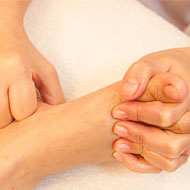Toothache Relief With Acupuncture
Acupuncture originated in ancient China some two and a half millennia ago. This form of traditional Chinese medicine regards the human body as being sustained by a life force or energy known as qi.
This energy flows through the body via pathways or meridians. The meridians have certain anatomical points, also known as acupuncture points that are said to possess certain electrical properties.
Blockages in the meridians can interrupt the flow of qi and are responsible for causing diseases. Acupuncture uses pressure on the acupuncture points to remove the blockages thereby easing the flow of energy and providing symptomatic relief. The pressure is applied by inserting thin, long needles into the skin at the appropriate points.
Acupuncture has gained in popularity in the United States since the early 1970s and many scientific articles have been published in reputed journals testifying to the efficacy of this procedure in the treatment of pain and various other disorders.
Acupuncture has been used successfully to treat toothaches and there is also evidence to suggest that it is effective in reducing post-operative tooth pain. Traditional Chinese medicine considers tooth pain to be a result of blockages occurring along the meridians that lead to the mouth. The correct remedy for this is the application of pressure to the points along the meridian such as the “ear gate point” and the jawbone point”. This pressure will free the blockages and allow the uninterrupted flow of qi through the meridians of the mouth.
Point TH21 for Toothache on the Upper Jaw
Also known as the “ear gate point”, the TH21 point is located at the meeting point of the ear and the upper jaw bone. It is considered to be a part of the “triple heater” meridian that connects to the head, chest and navel and is associated with heat energy. It is usually used to treat tooth pain that originates in the upper jaw and may also be used in conjunction with other points such as the ST6 and ST7 points.
Point ST6 for Toothache and Gum Disorders
Point ST6 or the jawbone point is located on the front portion of the mandible hinge on the masseter muscle.
To find this spot, clench your rear teeth and locate the spot on the muscle that bulges out. This point is located on the stomach meridian that connects a total of 45 different points in the body. The point also regulates the production of acids and enzymes, making it useful in treating gum problem as well.
Point ST7 for Toothache on the Lower Jaw
This point is also known as the “below the joint point” and is also located on the stomach meridian. It lies at a point in front of the ear at the soft point where the cheekbone meets the jawbone and is usually used to treat toothache originating from the lower jaw. Since it is also on the stomach meridian, it too can be used to treat gum disorders and is often used in conjunction with ST6 and TH21 points.
The evidence for the efficacy of acupuncture in treating toothache is still inconclusive according to the National Center for Complementary and Alternative Medicine. While some studies show that it is more effective than a placebo in treating dental pain, others have shown no such effect leading some to speculate that the power of acupuncture may lie solely in the mind.
There are many people however, who swear by the benefits of acupuncture in treating dental pain. It is bly suggested that you do not use acupuncture as a substitute for dental treatment but rather, as a complement. If you are experiencing any toothache or discomfort, consult your dentist before trying to treat it with acupuncture.
 Find Pose
Find Pose

